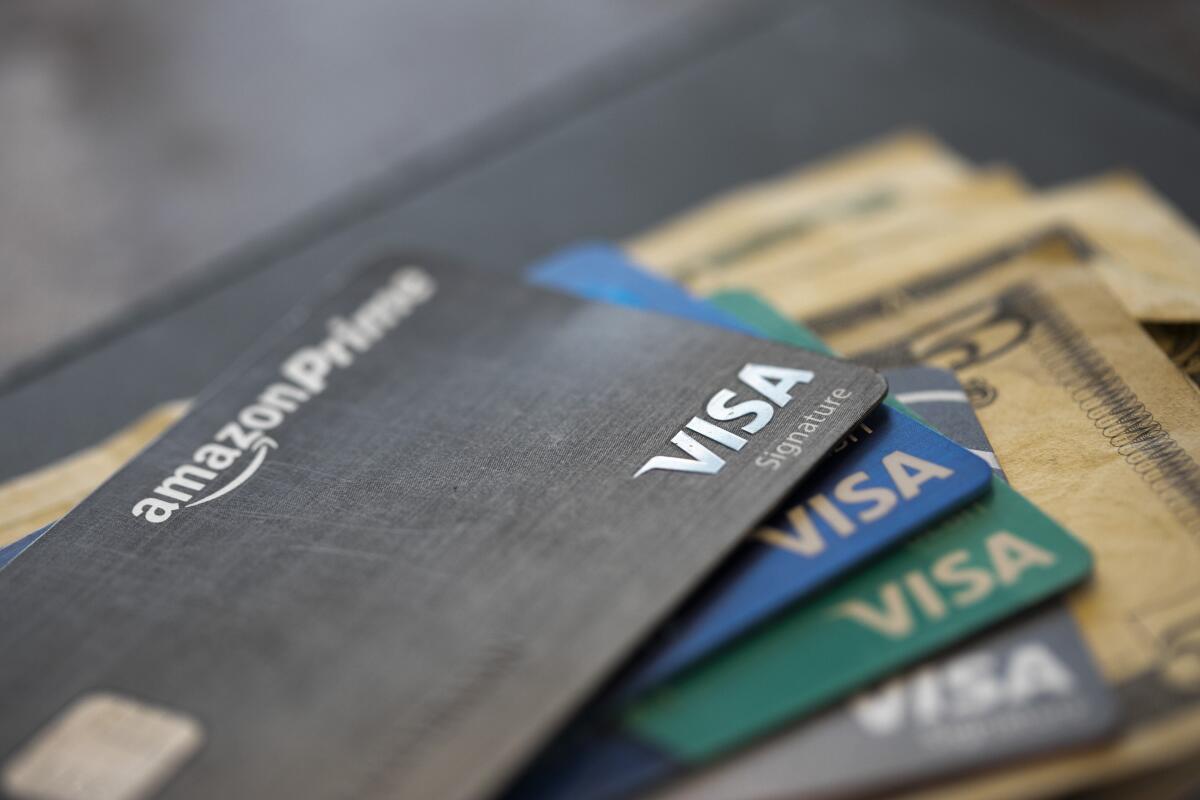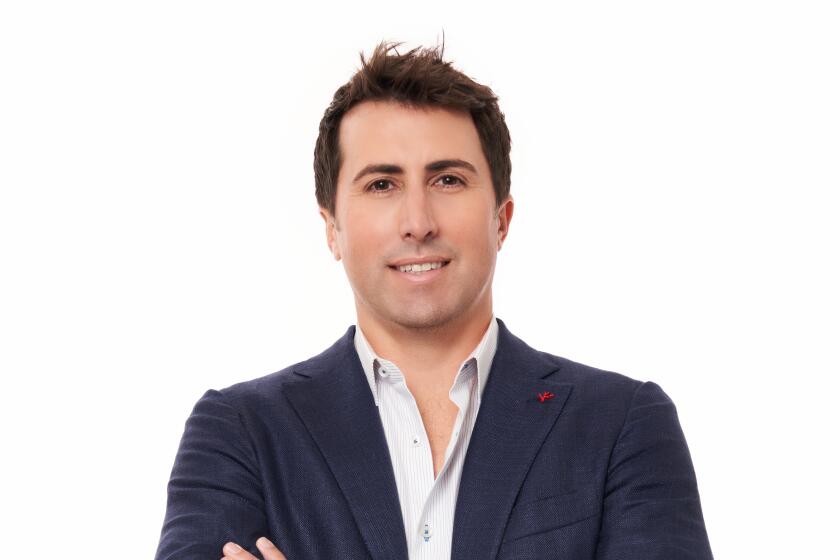A warning sign for the buy-now-pay-later app Affirm

- Share via
Some of the riskiest loans given to millennials and Gen Z shoppers for clothes and electronics — and neatly repackaged for investors — are dropping in value.
Securitization packages of buy-now-pay-later loans from one provider, Affirm Holdings Inc., are falling in price for investors to buy while becoming more expensive to issue, after rising rates and a cost-of-living crisis cast a shadow over the sector.
Affirm has more than 12.7 million customers and extended around $3.9 billion of loans in the first three months of 2022. It was valued at $47 billion in September after a blockbuster listing on Nasdaq in January 2021, but its shares have fallen more than 80% this year.
The stock slid a further 5.5% this week after Apple Inc. said Monday that it would enter the buy-now-pay-later, or BNPL, market, allowing iPhone users in the U.S. to make installment payments for purchases.
Investor nerves
Affirm funds about a third of its business through securitizations — an asset class that rose to prominence during the subprime mortgage crisis — bundling loans together and selling slices to investors. The model is relatively rare among BNPL companies, which tend to fund themselves through debt and, in Klarna’s case, customer deposits. Australia’s Zip pioneered securitization in this space, albeit through deals that were smaller than those of Affirm.
The financial app Dave promises its customers freedom from expensive bank overdrafts. But for almost all of its users, its services are hardly free.
Harry Kohl, a Fitch Ratings analyst who covers the asset-backed securities sector, said the ratings agency is “monitoring closely” Affirm’s securitizations after seeing a weakening in credit quality in its public disclosures. “When you are originating to borrowers with low or thin credit — the younger demographic, essentially — that’s always a warning for us and something that could be an indicator of potential negative credit performance,” Kohl said.
The deterioration in Affirm’s securitization values also tells a wider story. Investors are starting to worry that the burgeoning BNPL sector, which commanded heady valuations and was hailed as one of the fastest-growing fintech genres just a year ago, may be hit by a double whammy of rising rates and a squeeze on household incomes.
Affirm’s growth
Affirm itself believes that its business is robust, with a diverse funding model that will become profitable as it grows. “We are well positioned to drive growth while maintaining attractive unit economics, despite volatile market conditions and a rising interest rate environment,” a spokesperson said. Tech startups use “unit economics” to describe the profitability of an individual transaction and to indicate the viability of the business in the long term.
The spokesperson said Affirm is effectively delivering a 4.7% profit margin per transaction, or revenue less transaction costs as a percentage of gross merchandising value. That is above its long-term target of 3% to 4%. In the nine months that ended March 31, the San Francisco company reported a loss of $520.1 million, outpacing the loss of $312.6 million in the same period last year.
Like rivals Klarna and Jack Dorsey-owned Afterpay, Affirm allows online shoppers to obtain unsecured installment loans. It is well known for allowing consumers to buy Peloton exercise bikes and spread out the cost over several months or even years. It charges interest on some monthly offerings, which helps buffer against rising rates.
Credit revolution
Affirm founder Max Levchin said last year that younger people were no longer willing to “tolerate getting into permanent debt” by using traditional credit cards and preferred to use BNPL to pay for their purchases.
Most of the BNPL companies that have enjoyed rapid growth in the last few years were created during a low-interest-rate environment. They are now seeing head winds from rising interest rates and volatile credit markets, said Kevin Barker, an analyst at Piper Sandler & Co. “The ability to buffer against higher funding costs is important to the long-term viability,” he said.
Affirm pushed back its latest securitization sale in March, before selling notes maturing in May 2027 at a coupon of 4.3% on the main tranche. It paid 0.88% on the same tranche of a similar deal issued in February 2021 that matures in August 2025. Although the yield at the time of pricing was 0.89%, the February bonds are now yielding 4.01%, according to a Bloomberg model that assumes borrowers won’t prepay their debt, meaning they will pay the debt when the installment loan payment is due.
The A tranche of the February 2021 note hit its lowest dollar price value in mid-May, at 98.1 cents, down from a peak in July 2021, when it was above par, at 100.1.
The borrowing cost on Affirm’s warehouse credit facilities, a type of bank lending usually given to mortgage providers, is also rising as it is pegged to benchmark rates, some of which have soared more than 100 basis points so far this year. Less than 20% of the company’s funding is tied to floating rate debt, and the company doesn’t expect rising rates to have a “significant impact” on profit per transaction in the fiscal year, according to a company spokesperson.
Deals across the asset backed security market have weakened since the start of the year, as volatility and concerns over interest rate increases have made spreads widen and dollar prices drop.
Buy-now-pay-later is here to stay and Affirm’s funding model is sustainable, Barker at Piper Sandler said. The short nature of BNPL allows the business to weed out delinquencies much faster than in the traditional bank loan or mortgage market.
“Subprime is always subprime. If you treat it that way and understand what you’re underwriting, it can be very profitable,” Barker said.
— Bloomberg writer Michael Tobin contributed to this report.
More to Read
Inside the business of entertainment
The Wide Shot brings you news, analysis and insights on everything from streaming wars to production — and what it all means for the future.
You may occasionally receive promotional content from the Los Angeles Times.











